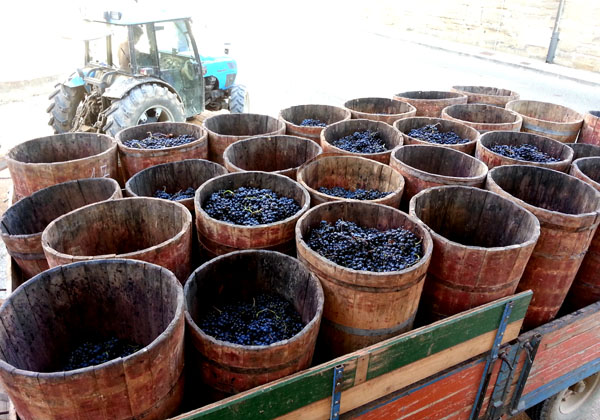Do you know who were the first to pick the grapes from the vines and tread them in a wooden bucket? Many people think it was the Greeks, but it was not. In this post, we tell you who started this work called grape harvest, the collection of the fruit of the vine, which has remained almost intact to this day.
The development of viticulture
It was the Egyptians who developed this practice for the first time with a certain degree of technique, despite the years that separate us. The process was very similar to what we know today: the bunches of grapes were harvested from the vines and placed in baskets that were transported to a wine press. This process was carried out by the grape harvesters.
Wine, at that time, was a drink considered divine and enjoyed only by nobility and royalty. It was customary to mix it with honey and other aromas that softened its character.
Wine acquired a social and relevant character in Greek and Roman society under the protection of the god of wine, Dionysus for the Greeks, Bacchus for the Romans. In honor of this god, innumerable celebrations were held, such as the famous bacchanals.
The Harvest in Spain
The arrival of Christianity in the Middle Ages had a great influence on the world of wine. The crops were located around the monasteries and their production was destined for liturgy and food. In the case of the Cistercian monks, the consumption of a glass of wine daily was part of their diet, and the common people included it in their regular diet.
From its origin to the present day, the technological advances that took place at the beginning of the 19th century have been transcendental for the evolution of the grape harvest.
The history of La Rioja must be taken to contextualize those moments of expansion in Spain, with the arrival of Basque and later Jerez capital to invest in new wineries in what was then the only prestigious wine-growing area in the country. This capital, in many cases financial, bet on winemaking with the introduction of stainless steel and other technologies, in a Spain that was beginning to enjoy wine as a consumer product beyond as part of the diet that winegrowers and other farm workers needed for their daily work.
For years, it was the grape harvesters who picked the grapes and selected in the winery which grapes were suitable for wine production.
The industrialization of the sector, first in the 19th century with the arrival of French capital in La Rioja to guarantee the supply of grapes after phylloxera devastated the Bordeaux vineyards, and then in the 20th century with the investment of financial and industrial capital, elevated the wineries to the status of companies.
Harvesting began to share space with technology when traditional goblet-trained vineyards gave way to trellis planting in search of better yields. In this sense, the trellis was used to guide the plant by giving it a more open shape in order to achieve greater sun exposure and better aeration, thus reducing the risk of fungal diseases. In this way, a higher population density and better use of space was achieved, as well as more uniform bunches in terms of both size and ripening. This system also facilitated certain mechanical work, including machine harvesting.
The grape harvest at Familia Martínez Bujanda
What was the first winery of Familia Martínez Bujanda, founded in 1889, has become a unique space, a museum, an authentic place of worship to wine.. It is located in the upper part of the town of Oyón. appreciate winemaking and wine aging techniques used more than 100 years ago in La Rioja.
The winery is located on three different levels to take advantage of gravity in the winemaking process.
How was the wine made?
The reception of the grapes was carried out through the use of
comportones,
which were deposited in open lakes. After that, the wines were lightly crushed and then left to ferment (8-10 days). Once fermented, the wine was separated from the mash, making four fractions of different qualities that could then be blended or not.

The first fraction was the tear wine, which came out by gravity. The second, the standing wine, which came out by stepping on the paste. The third, the remango, which consisted of continuing to tread half a lake on top of the other. The fourth, finally, the wine coming from the press.
Union between tradition and technology
The latest advances together with the idea of a return to the origins propose a return to concrete tanks for the fermentation and aging of wines. Its use was already common in its beginnings, but stainless steel became popular in the 1970s due to its easy cleaning and ability to control temperature, which relegated concrete to a secondary role. This material has been revalued again with concrete eggs, which are now widely used for the aging on lees of some white wines, and smaller cement tanks for the micro-elaboration of exclusive wines.
The technological revolution, trends and a constant evolution makes the process change, but in The Martínez Bujanda family always maintains the care and pampering of the fruit. With respect for the environment and sustainability at the root of everything.
We are proud to belong to families that have incorporated a fifth generation and we are convinced that success has a lot to do with respecting the identities of the terroirs and paying the right attention to fashions.




